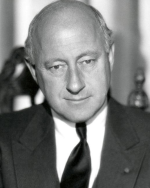 I finished The Quantum Labyrinth: How Richard Feynman and John Wheeler Revolutionized Time and Reality (2017), by Paul Halpern. As the title implies, the book revolves around the careers and lives of John A. Wheeler (1911–2008) and Richard Feynman (1918–1988). After Feynman graduated from MIT he became Wheeler’s teaching assistant at Princeton. The two men, despite very different personalities, became life-long friends and collaborators.
I finished The Quantum Labyrinth: How Richard Feynman and John Wheeler Revolutionized Time and Reality (2017), by Paul Halpern. As the title implies, the book revolves around the careers and lives of John A. Wheeler (1911–2008) and Richard Feynman (1918–1988). After Feynman graduated from MIT he became Wheeler’s teaching assistant at Princeton. The two men, despite very different personalities, became life-long friends and collaborators.
One of Wheeler’s many claims to fame is his promotion of Hugh Everett’s PhD thesis, The Theory of the Universal Wave Function. That paper, of course, is the seed from which grew the Many Worlds Interpretation of Quantum Mechanics.
The thing is, there are two major versions of the MWI.
In what seems to be the popular version (Sean Carroll’s version, I believe), when the experiment begins there is only one Schrödinger’s Cat. In the simplest version of the tail tale, the cat “branches” into two cats, one sleeping, one awake. The scientist branches into two upon opening the box, and Wigner branches into two upon hearing about the experiment.
The main feature being that a single object “branches” into two versions of that object that are different due to a quantum interaction that is magnified to classical scale. (For instance, a radioactive decay detected by a Geiger counter.)
In the other version there were always two cats. Their world paths happened to be identical up to the point they diverged (a better word than “branched”). The universal wavefunction has (among infinite others) two superposed worlds:
Where world1 describes a world in which the cat stays awake and world2 describes a world in which the cat sleeps. Both worlds are identical until the divergence point but differ after.
What complicates the picture is that, in both versions, there are actually lots of cats. The radioactive decay can happen at any point during the experiment, and a cat that sleeps at the one-minute mark is different from a cat that sleeps at the 59-minute mark (or any minutes or seconds between). The wavefunctions describing these would be different, because an entire cat-load of particles have different positions in each description. Since it’s true in both versions, it’s irrelevant here.
§
I’ve discussed this at length in previous posts; I won’t get into it here. What prompts this post a juxtaposition between some of what Halpern wrote about the MWI in Quantum Labyrinths, a recent YouTube video by Dr. Sabine Hossenfelder, and some text in the MWI article on SEP.
The punchline is that I’m getting a strong impression the popular version of the MWI is just plain wrong. The second version is what Everett had in mind. The regrettable term “branching” was used more in the sense of a two-lane road branching into two separate one-lane roads.
§
One issue the popular version of the MWI has is needing to account for how energy (or mass) can branch into multiple versions that appear to have the same mass (or energy) as they did before. Sean Carroll has spoken of “thinning” which admits to the issue — one really does become two (or more).
Dr. Hossenfelder’s video is about vacuum energy, but in it she mentions something I’ve been wondering about: The gravitational constant, G, is an empirical property of reality — it’s something that we measure. It depends mainly on the mass of an object (but time is also a consideration as there is a “per second squared” element).
Simply put, the rate at which objects of given masses accelerate towards each other tells us the value of G.
Einstein taught us that energy and mass are the same thing (and, regardless, if the world really branched, both energy and mass would be split). Therefore, if energy/mass is “thinned” then the gravitational constant, G, must change.
And we would notice that.
If mass was being “thinned” out, gravity would become less.
(This would also, I imagine, really mess with GPS accuracy.)
§
I’ve returned the book to the library, so I can’t quote what Halpern wrote, but when I read it there was a bit of an “ah, ha!” in my mind. I’ve been pondering the two versions of MWI for a while, so it caught my attention.
Then I saw Dr. Hossenfelder’s video, and there was another “ah, ha!”
In the SEP article, section 3.2 describes how (presumed) quantum objects, along with a collection of free particles (such as photons), combine to create a wavefunction that describes a complete world (from Big Bang to whatever end).
Then section 3.3 describes how each world is superposed in the universal wavefunction. Note that each world wavefunction is not a superposition of all the objects in that world, but a combination of them (a tensor product, I assume).
Bottom line: It doesn’t look good for the “branching” version. It seems to be an over-simplified version that’s as wrong as the over-simplified view of Hawking radiation (of virtual particle pairs appearing right on the black hole horizon and one of them getting sucked in while the other escapes).
§
I’ve been meaning to look into what Bryce DeWitt (1923–2004) and David Deutsch (1953–) have written about MWI. I understand Deutsch promotes the second version, but I have the sense DeWitt promoted the first. I think he may be responsible for the term “branching.” (Wheeler had Everett scrub such terms from his paper.)
And while Wheeler brought Everett to the attention of the theoretical physics world, it was DeWitt who popularized the idea. Now it’s something almost everyone has heard of. It’s part of the popular culture.
§ §
In any event, the “two cats” version doesn’t have the energy/mass issue. Each world has its own allotment of energy/mass, and that never changes.
Which isn’t to say I think either version is right; I don’t. But I’ve especially never liked the “one cat becomes two” version, and I’ve never seen any supporter provide a sensible explanation of how that works. If I’m right about the gravitational constant, this version is ruled out.
The “two cats” version still has probability issues and (worse, I think) physical coincidence problems. There is also the problem of determining exactly what comprises a separate world. How different does the wavefunction have to be?
Stay singular, my friends! Go forth and spread beauty and light.
∇













August 19th, 2021 at 12:43 pm
Here’s Dr. Hossenfelder’s video:
August 19th, 2021 at 3:01 pm
This “two cats” version also explains (to some extent) why we don’t have access to other versions of reality. It’s not that we branched away and “decoherence” explains why we lose access (an explanation I’ve complained loudly about).
It’s that the worlds were always separate. One has to rely on the wavefunction being a wave-based description of the universe that naturally allows superposition of wave-based descriptions of worlds. Mathematically such worlds would certainly have no knowledge of, nor access to, each other.
The problem is that MWI is not a Platonic or Tegmarkian theory, but a realist one that reifies the wavefunction as physical reality. But superpositions in physical reality are combinations of contributing waves — the combination is what appears in the wave’s medium. Various kinds of analysis over time can pick out the contributing waves, but the physical presentation is the combination. In a very real sense, the contributing waves absolutely know about each other. They’re part of one whole.
The other problem is that, since the superposition can’t be purely mathematical, what is the medium that even allows physical superposition of myriad entire realities, some of them vastly different?
August 19th, 2021 at 3:13 pm
Something for another post, but I noticed this in the SEP article:
So if the main attraction to the MWI is that it’s local, that’s not the case.
This highlights that Einstein’s “spooky action at a distance” wasn’t focused on entanglement, but on the instantaneous collapse of the wavefunction at all points in space. (Not that he was happy about entanglement, either.) The MWI does do away with wavefunction collapse and its apparent action at a distance, but nonseparable states — entangled states — still exist.